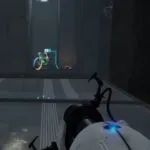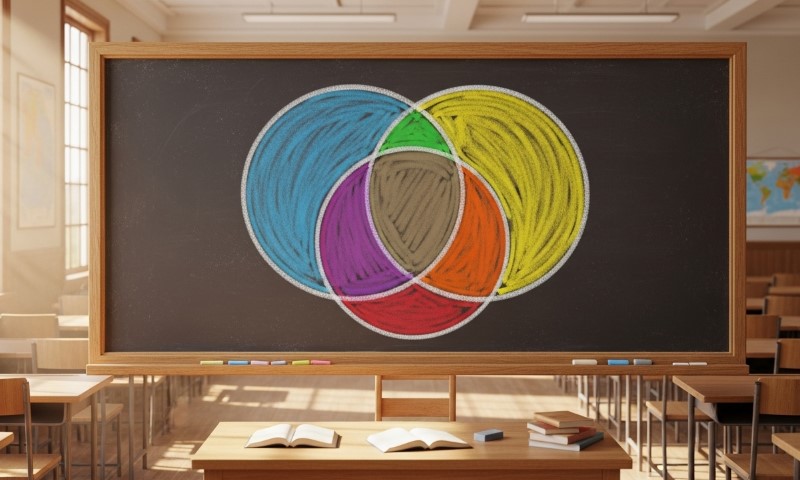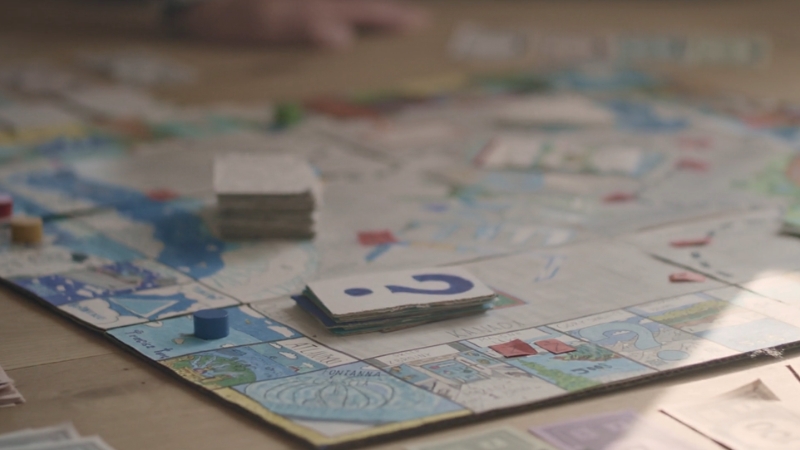
Share Post:
Not all board games are the same, and if you’ve ever sat down to play Catan, UNO, or Codenames, you’ve probably noticed that each one feels like a completely different experience.
That’s because they belong to various types of games.
Some are all about strategy and long-term planning. Others are quick, social, and perfect for family nights.
And then there are games where you work as a team, or try to out-bluff your friends. In this guide, we’ll explain the main types of board games in plain language—nothing too technical, just real talk about what makes each type fun (or frustrating).
1. Party Games
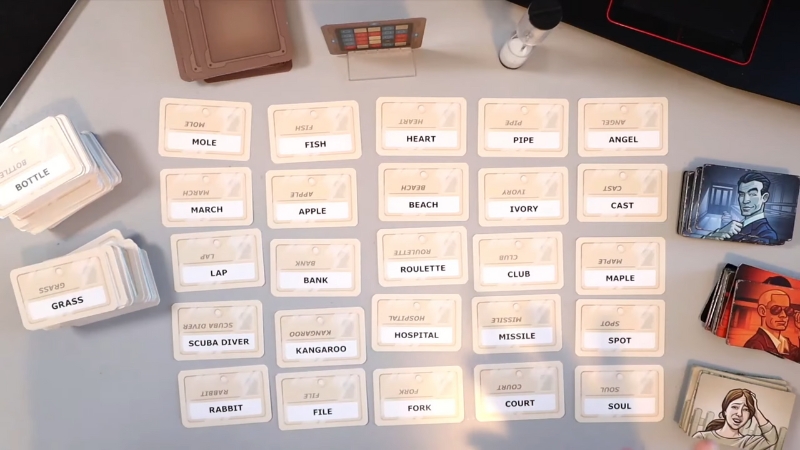
Attribute
Details
Example Game
Codenames
Ideal Players
4 or more
Play Time
15–30 minutes
Focus
Wordplay, team-based clues, light competition
Why people love them: Party games are built around laughter, speed, and low-pressure fun. They don’t expect deep strategic thinking or long-term planning — instead, they create memorable moments, inside jokes, and chaotic teamwork.
There’s minimal downtime, which keeps energy high, and even players who claim “they don’t like board games” usually get pulled in after one round. They’re perfect for mixed-age groups, family holidays, game nights with friends, or even as icebreakers at team-building events.
What Codenames feels like: Two teams face off with 25 words laid out in a grid. Each team has one clue-giver — the Spymaster — who knows which words their team should guess. The Spymaster gives a one-word clue and a number (like “Ocean: 2”), trying to get their team to pick two related words.
But some of the words belong to the enemy, and one word is the “assassin” — if guessed, the team loses instantly. The tension of trying to be clever while your teammates wildly overthink your clue is hilarious and frustrating in the best way. It’s one of the few games where everyone shouts, laughs, and argues over nothing, and loves it.
2. Engine-Building Games
| Attribute | Details |
| Example Game | Wingspan |
| Ideal Players | 1–5 |
| Play Time | 45–75 minutes |
| Focus | Compounding strategy, card synergy, slow power ramp-up |
Why people love them: Engine-building games reward efficiency and clever planning. At first, it feels like you’re doing almost nothing — you get one card or one coin, maybe lay one piece.
But as turns pass, your “engine” grows stronger: now that one card gives you two things, or triggers a bonus when something else happens. It’s like building a machine that gets more effective every round. These games are satisfying for players who like to feel smart and enjoy watching their strategy unfold and snowball toward big, final moves.
What Wingspan feels like: You’re managing a wildlife preserve, collecting birds, and placing them into habitats. Each bird card has unique effects: some give resources, others lay eggs, others draw a card, or activate other birds.
Over time, your preserve becomes a chain reaction — one action might trigger four others if you’ve built your tableau well. But it’s not a race. Wingspan is calm, beautiful, and meditative, especially with its real bird illustrations and soothing pacing. It’s a thinking game that doesn’t feel stressful, which is rare.
3. Dedication Games
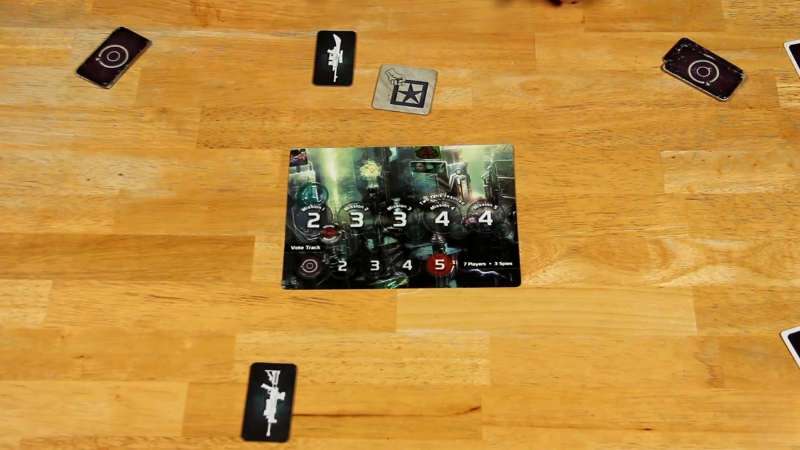
Attribute
Details
Example Game
The Resistance
Ideal Players
5–10
Play Time
30–45 minutes
Focus
Hidden roles, social logic, trust, and deception
Why people love them: Dedication, challenges your ability to read people. They’re not about luck or even traditional strategy — they’re about psychology, body language, and social manipulation.
Players are often given secret roles or hidden information, and they need to figure out who’s lying, who’s pretending to be helpful, and what the truth is. These games thrive on table talk, suspicion, accusations, and alliances. They often leave you talking about “what happened” for days afterward.
What The Resistance feels like: Everyone gets a secret role: you’re either part of the Resistance (trying to complete missions) or a Spy (trying to sabotage them). Each round, a team is proposed for a mission. Everyone votes on whether the team should proceed. If approved, only the selected players submit secret votes to succeed or fail the mission.
If a single Spy votes to fail, the whole thing collapses. And nobody knows who did it. The drama builds fast, and by the third round, you’re eyeing your best friend with total suspicion. It’s a rollercoaster of bluffing and finger-pointing — intense but exhilarating.
4. Cooperative Games
Attribute
Details
Example Game
Pandemic
Ideal Players
2–4 (can scale to 5)
Play Time
45–60 minutes
Focus
Teamwork, strategic coordination, and crisis management
Why people love them: Cooperative games are perfect for players who hate direct competition or arguing over points. Instead of battling each other, everyone is on the same side, facing the same challenges.
These games demand communication, joint planning, and sometimes hard sacrifices. Win or lose, the team shares the outcome, making them perfect for couples, families, or friend groups that prefer “us vs. the game” rather than “me vs. you.”
What Pandemic accelerates like: You and your teammates play as global specialists trying to stop the outbreak of four deadly diseases. Every turn, things get worse — cities become infected, outbreaks spread, and panic grows.
You race across a world map, using limited actions to treat disease, share knowledge, and discover cures before it’s too late. It feels like a puzzle and a race against time. When you win, it’s because you planned together. When you lose, it’s often by just a turn or two, and you’ll immediately want to try again.
5. Deck-Building Games
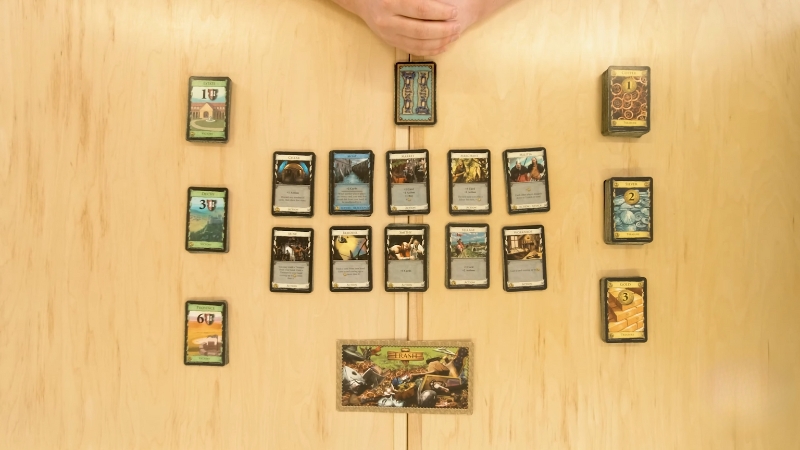
Attribute
Details
Example Game
Dominion
Ideal Players
2–4
Play Time
30–45 minutes
Focus
Building a card engine, optimizing hand draw, and tempo
Why people love them: Deck-building games are like puzzles you build yourself as you play. You start with a weak set of cards — basic income, maybe a few actions — and every turn, you buy better cards to improve your future hands.
The thrill comes from creating a lean, powerful deck that works just the way you want. It’s all about tempo, timing, and synergy. These games are highly replayable since the pool of available cards can change every game.
What Dominion feels like: You begin with ten dull cards and a plan to become rich, powerful, or efficient — or all three. As you buy better cards, your deck gets reshuffled and grows.
Some cards give you more money, some let you draw more, and others let you chain actions. But if you fill your deck too fast or with the wrong combinations, it bogs down. It’s like trying to build a sports car engine out of playing cards — and when it runs smoothly, it’s a beautiful thing.
6. Area Control Games
@snappybits2 Every Way to Win RISK Explained #learnontiktok #knowledge #riskgame #gametheory #worlddomination #stratedygames #winatrisk #boardgamestrategy ♬ original sound – Zuno
Attribute
Details
Example Game
Risk
Ideal Players
3–6
Play Time
1.5 to 3 hours (or more)
Focus
Strategic positioning, dominance of territories, alliances
Why people love them: Area control games bring out the conqueror in people. You build armies, expand your control, and push into enemy territory — all while watching your back.
These games are often long, intense, and full of betrayals and sudden reversals. There’s a strong balance between diplomacy and brute strength, and every move can trigger consequences you didn’t expect.
What Risk feels like: You start with a few scattered armies across a map of the world. Slowly, you build power, reinforce your regions, and begin attacking neighbors. But you can’t grow too fast — or everyone will target you.
Alliances form (and break), continents are fought over like gold mines, and entire armies get wiped out with one unlucky dice roll. It’s a game of bold moves, long-term scheming, and glorious (or crushing) defeat.
7. Legacy Games
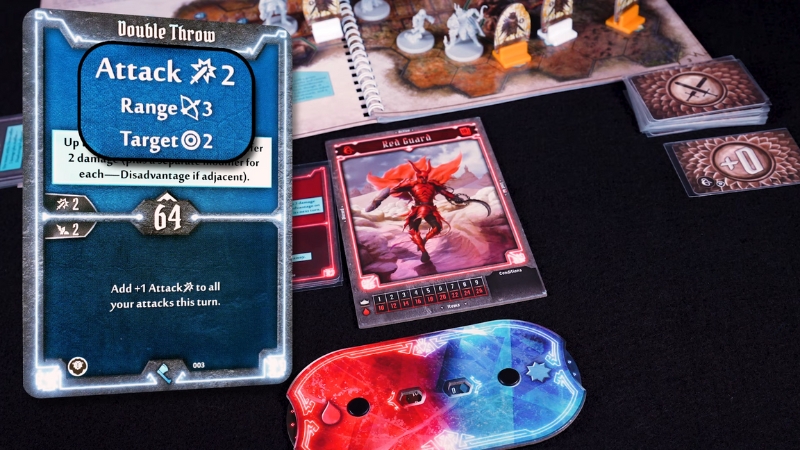
Attribute
Details
Example Game
Gloomhaven: Jaws of the Lion
Ideal Players
1–4
Play Time
Campaign: 20–30+ hours
Focus
Ongoing character/story progression, permanent choices
Why people love them: Legacy games tell a story that unfolds over multiple play sessions. Unlike regular board games, your decisions permanently change the game: stickers go on the board, rules evolve, new content is unlocked, and previous events shape what happens next.
Legacy games reward commitment and immersion. They’re not one-night experiences — they’re campaigns, like a TV show or RPG you play through with friends.
What Gloomhaven: Jaws of the Lion feels like: You’re part of a gritty adventuring crew in a dark, fantasy city. Each session is a tactical battle with its twists. As you win, you level up, unlock new character abilities, and alter the map.
You might burn a card forever. You might unlock a hidden boss. Every choice — whether in battle or during story moments — matters. And because the game is cooperative and deep, it creates a shared world that your group genuinely remembers, episode by episode.
8. Roll-and-Write Games
| Attribute | Details |
| Example Game | Welcome To… |
| Ideal Players | 1–100 (seriously) |
| Play Time | 25–30 minutes |
| Focus | Strategic choices from dice/card results, solo-friendly |
Why people love them: Roll-and-write games are fast, fun, and addictive. You roll the dice (or flip cards), then choose how to use the results on your sheet. Everyone plays at the same time with the same inputs — it’s like a multiplayer puzzle where each player follows their strategy. There’s minimal downtime, almost no setup, and they’re super portable.
What Welcome To… feels like: You’re designing a suburban neighborhood, choosing where to place house numbers, build pools, or install parks. Each round, you pick one of three combinations and fill them in on your sheet, trying to optimize your choices.
It’s about anticipating your future moves while reacting to what’s available now. You’ll mess up sometimes — but that’s part of the fun. Games go quickly, and you’ll immediately want to try again.
9. Economic/Market Games

Attribute
Details
Example Game
Power Grid
Ideal Players
2–6
Play Time
90–120 minutes
Focus
Auctions, budgeting, market timing, and resource management
Why people love them: Economic games reward players who can plan long-term, manage money wisely, and outthink their opponents in resource scarcity. You’ll be bidding, buying, selling, and upgrading — and mistakes cost you dearly.
These games simulate the tension of running a business or operating within a market. Perfect for players who love optimization and depth.
What Power Grid feels like: You’re an energy tycoon trying to expand your power network across a map. You compete in auctions to buy power plants, then buy fuel to run them, and finally use them to power cities.
But here’s the catch — every player affects the price of everything. If someone else grabs all the coal, your plant becomes useless. If you overbid, you’ll run out of money to expand. It’s chess with dollars and supply chains.
10. Abstract Strategy Games
Attribute
Details
Example Game
Azul
Ideal Players
2–4
Play Time
30–45 minutes
Focus
Pattern recognition, timing, and blocking opponents
Why people love them: Abstract strategy games strip away themes and narrative — they’re pure decision-making machines. Every move matters.
You see the whole board, your opponent’s intentions, and your own goals — and success comes down to cleverness, not luck. They’re usually beautiful, easy to teach, but hard to master.
What Azul feels like: You’re a tile artist decorating a palace wall. Every round, you draft tiles from the center, trying to fill rows and build the perfect pattern. But tiles come in groups — take too many and you waste some.
Wait too long, and the tile you need gets taken. You’re balancing scoring opportunities with future risks. It’s quiet, tense, and feels like solving a colorful jigsaw puzzle in real time, while your opponent steals the last blue tile you needed.
11. Bluffing Games
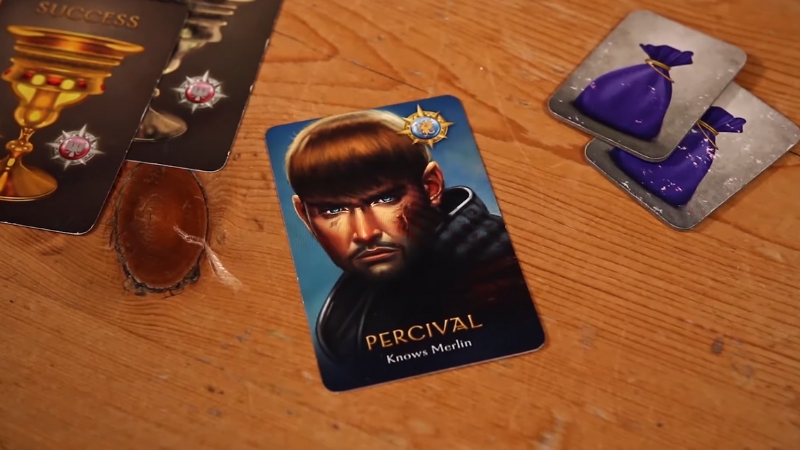
Attribute
Details
Example Game
The Resistance
Ideal Players
5–10
Play Time
30 minutes
Focus
Social deception, hidden roles, deduction
Why people love them: These games are all about reading people. Who’s lying? Who’s telling the truth?
Bluffing games create memorable, dramatic moments — accusations fly, alliances crumble, and trust disappears fast. They work best with bigger groups and are amazing for parties or game nights with friends who enjoy a bit of drama.
What The Resistance feels like: Players are secret agents or spies trying to complete missions. The twist? Some of the players are secretly traitors, and nobody knows who. Each round, players vote on who to send on missions.
If too many missions fail, the traitors win. It’s all about body language, vague logic, and subtle manipulation. You’ll swear someone is lying, accuse them, only to realize they were innocent. Then you’ll laugh, defend yourself, and try again.
12. Story-Driven Narrative Games

Attribute
Details
Example Game
T.I.M.E Stories
Ideal Players
2–4
Play Time
60–90 minutes per scenario
Focus
Exploration, immersion, story choices, puzzle solving
Why people love them: Narrative games play out like interactive novels or mystery TV episodes. You make choices, discover clues, and uncover secrets across branching paths.
Some have multiple endings, plot twists, or unlockable content. These games are great for people who care more about story and exploration than strategy or competition.
What T.I.M.E Stories feels like: You’re time-traveling agents dropped into strange events across history. You explore rooms, investigate people, solve mysteries, and uncover a hidden narrative.
You’ll often fail your first try, then reset with the knowledge you gained and do better. It’s part escape room, part RPG, part movie night with friends. Every session feels like an episode of a sci-fi drama that you star in.
13. Push-Your-Luck Games
@boardoutofourminds Quacks of Quedlinburg Overview ⚗️🧙🏻♂️ Designed by: Wolfgang Warsch Illustrated by: Dennis Lohausen, Wolfgang Warsch Published by: North Star Games 1-4 👥️ *Player expansion avaliable* 45 mins ⏱️ *wooden boxes sold separately* 🏆Connoisseur’s game of the year 2018 #game #games #gamer #boardgames #boardgame #tabletop #tabletopgames #potion #luck #fy #fyp ♬ Witch Familiar (Classical) [Classic](143628) – dice
Attribute
Details
Example Game
Quacks of Quedlinburg
Ideal Players
2–5
Play Time
45 minutes
Focus
Risk-taking, timing, bag-building, and decision-making under pressure
Why people love them: Push-your-luck games are about suspense and adrenaline. You make choices that could lead to big rewards — or total disaster.
They keep everyone engaged, with lots of laughs and groans as people tempt fate. Perfect for casual and mixed-experience groups.
What Quacks of Quedlinburg feels like: You’re a charlatan brewing potions using ingredients from a personal bag. Each round, you blindly pull chips one by one — the more you add, the more powerful your potion.
But if you pull too many white chips, your pot explodes. It’s a constant “just one more” dilemma. Should you stop and bank your points, or risk everything? It’s chaotic, funny, and surprisingly strategic once you learn the combos.
14. Real-Time Games
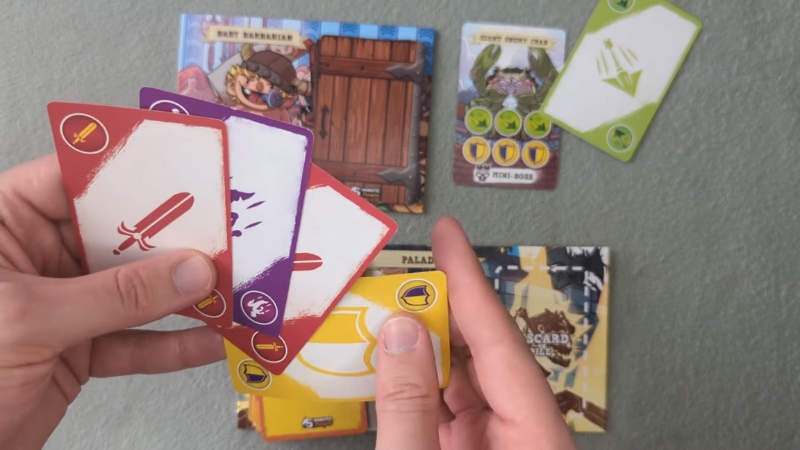
Attribute
Details
Example Game
5-Minute Dungeon
Ideal Players
2–5
Play Time
5–10 minutes per game
Focus
Speed, teamwork, chaos, communication
Why people love them: Real-time games are about fast reactions, time pressure, and pure teamwork. There are no turns — everyone plays at once, racing against a timer or the clock.
They’re thrilling and often frantic, delivering an intense burst of energy that feels like playing a game and doing cardio at the same time.
What 5-Minute Dungeon feels like: You’re a team of fantasy heroes trying to blast through a dungeon full of monsters and obstacles. Every player throws down cards to defeat threats as fast as possible — matching symbols, shouting over each other, trying not to waste time.
With just 5 minutes per dungeon, you feel the pressure immediately. There’s barely time to think — just act. If your group likes high-stress fun, this game delivers.
16. Educational Games
| Attribute | Details |
| Example Game | Timeline |
| Ideal Players | 2–8 |
| Play Time | 15–20 minutes |
| Focus | Knowledge, deduction, memory, and learning through play |
Why people love them: Educational games prove that learning doesn’t have to be boring. They use gameplay to teach facts, dates, logic, vocabulary, or math without making it feel like school. Great for families, classrooms, or trivia lovers.
What Timeline feels like: Each card has a historical event on one side and the year it happened on the other. Players take turns placing events in a growing timeline, guessing where they fit.
Was the invention of the compass before or after the printing press? Get it right, and your card stays. Get it wrong, and you draw again. It’s simple, snappy, and sneakily educational — you’ll remember dates without trying.
17. Campaign and Adventure Games
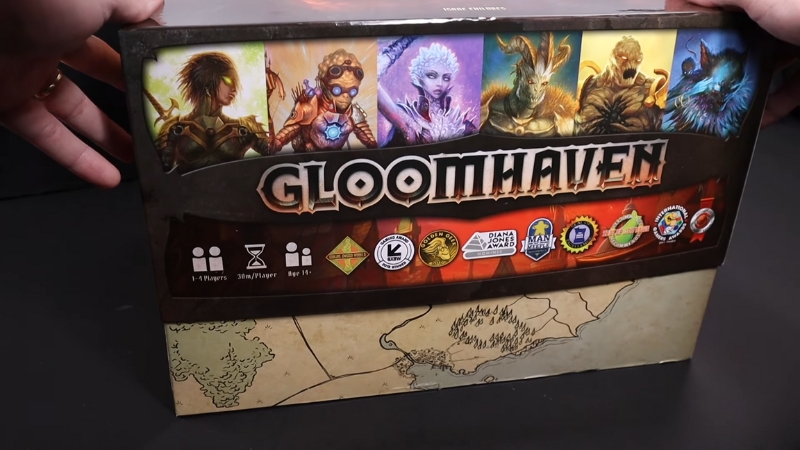
Attribute
Details
Example Game
Gloomhaven
Ideal Players
1–4
Play Time
90–150 minutes per session
Focus
Story progression, tactical combat, character development
Why people love them: Campaign games are the closest thing to an RPG in a box. You take on roles, go on missions, make decisions that change the world, and level up over time.
They’re big, deep, and often come with dozens of hours of gameplay. If you want epic scale and long-term commitment, this is your genre.
What Gloomhaven excels lat You play as a mercenary in a fantasy world, taking on missions and building a personal story. Battles are tactical, with card-driven combat that requires planning.
The world changes based on your decisions, unlocking new scenarios, characters, and twists. It’s not a one-night game — it’s a full-blown campaign where every choice has weight. You’ll come back week after week just to see what happens next.
18. Worker Placement Games
Attribute
Details
Example Game
Lords of Waterdeep
Ideal Players
2–5
Play Time
60–120 minutes
Focus
Strategy, resource allocation, and planning ahead
Why people love them: Worker placement games are all about planning and timing. You take turns assigning your workers (or tokens) to limited spots on the board that grant resources or actions.
Since spaces can get blocked, you have to think ahead and read your opponents. It’s perfect for fans of long-term strategy with a sprinkle of player interaction.
What Lords of Waterdeep feels like: You play as a secret lord in a D&D city, sending agents around town to gather adventurers and complete missions. Every decision matters — do you grab the fighters you need now, or take a risk and build a building that might pay off later?
It’s accessible for newer players but deep enough to keep hobbyists hooked. It’s not loud or chaotic — it’s a calm, satisfying kind of competition.
19. Dexterity Games

Attribute
Details
Example Game
Junk Art
Ideal Players
2–6
Play Time
30–45 minutes
Focus
Hand-eye coordination, balance, and physical interaction
Why people love them: Dexterity games test your actual physical skill — stacking, flicking, balancing, or building. They’re tactile, tense, and funny, often drawing a crowd just from the spectacle. Great for families and friends who like some hands-on fun.
What Junk Art feels like: You’re building sculptures from odd-shaped pieces (think Tetris meets Jenga). Each round has different rules — maybe you race, maybe you take turns — but the goal is always to build high and avoid collapse.
It’s the rare game where both kids and adults are equally challenged, and it’s hilarious when your masterpiece wobbles in slow motion before crashing.
20. Modular Board Games
Carcassonne is getting a new look for its third edition from @hig_games, which is due out in December 2021. The tiles now have a bit more rounding at the corners, as in the 20th Anniversary edition.
BGG game page: https://t.co/GgOa86YkPN —WEM pic.twitter.com/zLopMXXNUp
— BoardGameGeek (@BoardGameGeek) December 2, 2021
Attribute
Details
Example Game
Carcassonne
Ideal Players
2–5
Play Time
30–45 minutes
Focus
Tile placement, spatial awareness, strategy
Why people love them: Modular board games don’t have a fixed board — you build the world as you play. Every game is different. That randomness, combined with strategic placement, makes them endlessly replayable. They’re usually elegant, quiet, and surprisingly competitive.
What Carcassonne feels like: You place tiles to build a medieval landscape — cities, roads, farms, monasteries — and place followers (meeples) to score points. It starts simply, but soon you’re jockeying for control of a huge city or trying to block someone’s road. It’s a classic for a reason: quick to learn, rich in tactics, and always slightly different.
21. Auction & Bidding Games
| Attribute | Details |
| Example Game | Power Grid |
| Ideal Players | 2–6 |
| Play Time | 90–120 minutes |
| Focus | Resource management, economy, timing, and strategic bidding |
Why people love them: Auction games are about reading the room and managing your money. They simulate market dynamics — how much is something worth when other people want it too? These games reward both aggression and restraint, and usually spark a lot of table talk.
22. Hidden Traitor Games
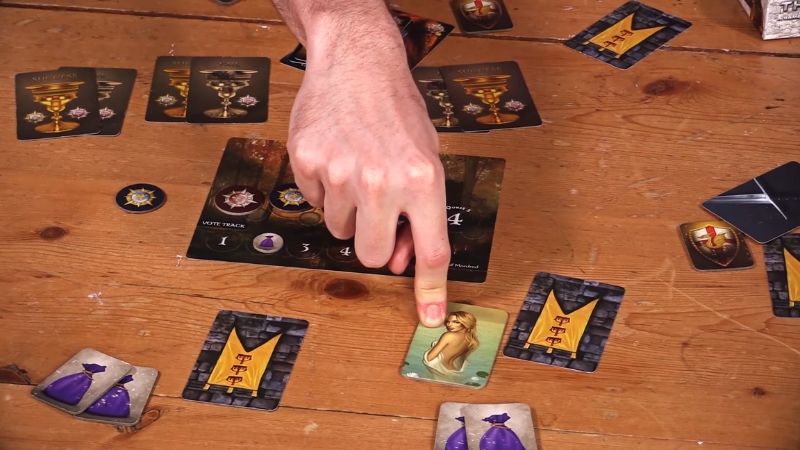
Attribute
Details
Example Game
The Resistance
Ideal Players
5–10
Play Time
30–45 minutes
Focus
Social deduction, bluffing, and team tension
Why people love them: Some games are all about trust and betrayal. In hidden traitor games, a few players secretly work against the rest.
The fun comes from arguing, lying, and trying to uncover who’s sabotaging the mission. They’re intense, often hilarious, and leave people talking long after the game ends.
What The Resistance feels like: You’re part of a futuristic rebel group trying to pull off missions, but some players are secretly spies.
Every round, you debate who to trust, vote on teams, and try to figure out who keeps making missions fail. It’s short, sharp, and full of drama.
23. Tableau-Building Games
Attribute
Details
Example Game
Wingspan
Ideal Players
1–5
Play Time
40–70 minutes
Focus
Engine-building, card synergy, efficiency
Why people love them: In tableau games, you build your world — a grid or row of cards with powers that combine and grow stronger as you play. The focus is on building something that works beautifully together.
What Wingspan feels like: You’re a bird enthusiast managing a wildlife preserve. You play bird cards to different habitats, each with abilities that trigger over time. The more you play, the more powerful your turns become. It’s relaxing, smart, and visually stunning — and it never feels mean-spirited.
24. Pick-Up and Deliver Games
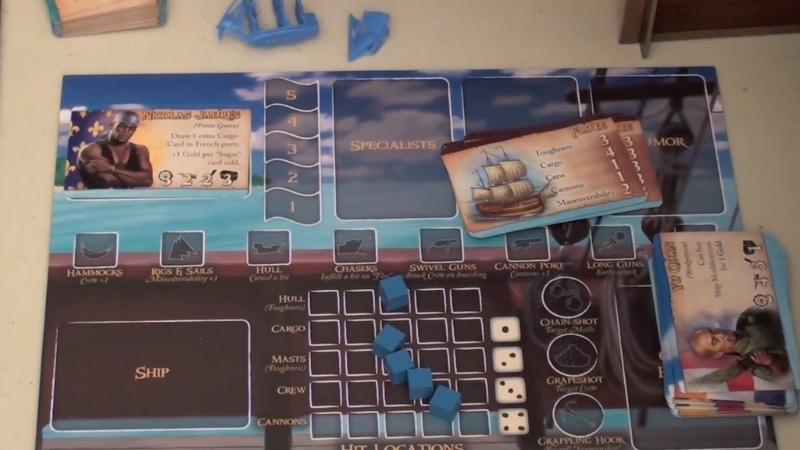
Attribute
Details
Example Game
Merchants & Marauders
Ideal Players
2–4
Play Time
90–150 minutes
Focus
Movement optimization, route planning, adventure
Why people love them: These games simulate trading or transport — you move around a map picking up goods in one place and delivering them to another. The challenge is managing distance, risk, and efficiency while often competing with other players or threats.
What Merchants & Marauders feels like: You sail the Caribbean as a trader or pirate, deciding whether to earn gold honorably or rob others blind. Each turn, you balance risk — storms, naval patrols, rivals — and decide your next port wisely. There’s even ship combat, market fluctuations, and quests. It’s a big, sprawling pirate sandbox.
25. Puzzle Games
| Attribute | Details |
| Example Game | The Island of Doctor Goorse |
| Ideal Players | 1–4 |
| Play Time | 45–75 minutes |
| Focus | Logic, riddles, hidden codes, teamwork |
Why people love them: These games recreate the thrill of escape rooms at home. They’re one-time use or replayable puzzle challenges where players must solve riddles, crack codes, and connect clues under pressure. Usually cooperative.
What Unlock! Feels like: You flip through cards to explore scenes, solve puzzles, and enter numeric codes into a companion app. Every riddle solved gets you closer to the final solution.
Some puzzles require lateral thinking, pattern recognition, or simply noticing something clever in the artwork. It’s immersive and satisfying when the group finally cracks a tough one.
26. Tug-of-War Games
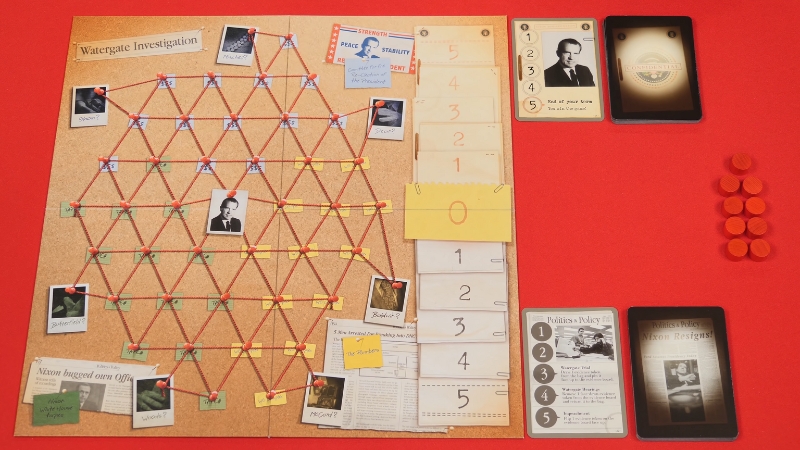
Attribute
Details
Example Game
Watergate
Ideal Players
2
Play Time
30–60 minutes
Focus
Tension, push-pull gameplay, strategic card play
Why people love them: Tug-of-war games are built around back-and-forth mechanics — you’re trying to pull the game’s key objectives toward your side while your opponent does the same. Every move counts, and momentum shifts constantly.
What Watergate feels like: One player is Nixon, trying to survive the scandal; the other plays the journalist, trying to connect informants. Cards move evidence tokens along a track — whoever gets them first controls the narrative. It’s tight, suspenseful, and full of tactical decisions. Every turn feels like a political chess match.
27. Storytelling Games
@sillwillstudios “Once Upon A Time”, a storytelling game … this might get interesting. From Atlas Games. #storytellinggames #inspiration #storyideas #whatcomesnext #writingideas ♬ Gnomes and Fairies – Marco Cutini
Attribute
Details
Example Game
Once Upon a Time
Ideal Players
3–6
Play Time
20–40 minutes
Focus
Creativity, improvisation, and collaborative storytelling
Why people love them: These games let players build stories together using prompts or mechanics. Great for families or groups that enjoy creativity over competition. Winning often takes a backseat to fun.
What Once Upon a Time feels like: Each player holds cards with fairy tale elements — a prince, a forest, a betrayal. As you tell your story, you play cards to match what you say. Other players can interrupt and take over if their cards fit the tale.
The goal? End the story using your final card. It’s unpredictable, silly, and highly replayable.
28. Map-Building Games
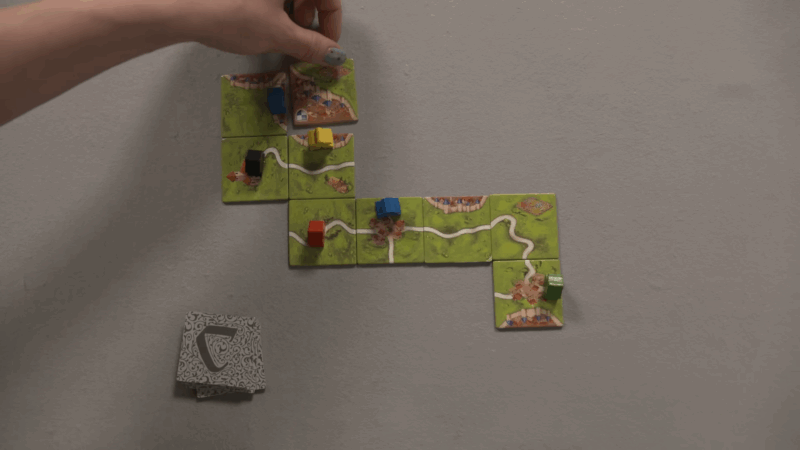
Attribute
Details
Example Game
Carcassonne
Ideal Players
2–5
Play Time
35–45 minutes
Focus
Tile placement, pattern matching, spatial strategy
Why people love them: You build the board as you go, creating roads, cities, rivers, or terrain in real time. The challenge is to place your pieces for maximum points while minimizing others’ opportunities.
What Carcassonne feels like: You draw and place square tiles to extend a medieval landscape — building towns, roads, and fields. You place followers (meeples) to claim features for points. The satisfaction comes from watching a sprawling, unique map grow with every game, and from snatching control of a castle from your opponent at the perfect moment.
29. Multi-Use Card Games
| Attribute | Details |
| Example Game | Race for the Galaxy |
| Ideal Players | 2–4 |
| Play Time | 30–45 minutes |
| Focus | Engine building, card management, and simultaneous actions |
Why people love them: In these games, each card can be used in multiple ways — maybe as currency, an action, or a building. Deciding how to use each card is the core challenge, adding deep layers of strategy.
What Race for the Galaxy feels like: You build a sci-fi empire using cards that represent planets, technologies, and trade routes. Each card can be a part of your tableau or spent as resources.
Players secretly choose actions and reveal them at the same time, so reading your opponents is as important as optimizing your engine. Fast-paced and full of tough choices.
30. Hidden Movement Games
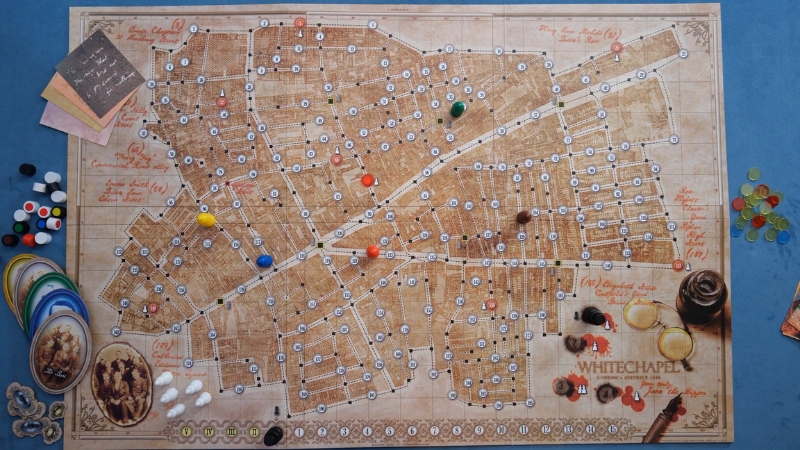
Attribute
Details
Example Game
Letters from Whitechapel
Ideal Players
2–6
Play Time
90–120 minutes
Focus
Dedication, stealth, and team strategy
Why people love them: One player moves in secret while others try to track them down. These games create asymmetrical gameplay with high tension — the hunter and hunted dynamic never gets old.
What Letters from Whitechapel feels like: One player is Jack the Ripper, secretly moving through the streets of London. The rest are detectives, trying to triangulate Jack’s location based on limited clues. The game simulates a true cat-and-mouse chase, full of close calls, bluffing, and collective deduction.
31. Asymmetric Role Games
Attribute
Details
Example Game
Root
Ideal Players
2–4 (best with 4)
Play Time
60–90 minutes
Focus
Conflict, unique player powers, and area control
Why people love them: Everyone plays a completely different game — different mechanics, goals, even actions. It’s like 4 games in one, but deeply interconnected.
What Root feels like: One player is a powerful military force, another is a rebellion, a third is a sneaky merchant raccoon, and another spreads religion. Each has a unique rulebook, but they all fight over the same woodland map. It’s chaotic, deep, and rewards repeat play.
32. One-Versus-Many Games
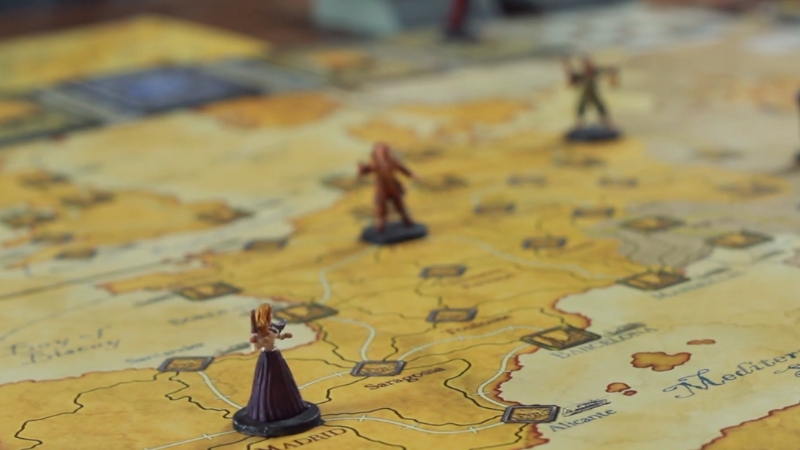
Attribute
Details
Example Game
Fury of Dracula
Ideal Players
2–5
Play Time
2–3 hours
Focus
Hidden movement, teamwork, and deduction
Why people love them: One player controls a powerful villain, while others team up to stop them. Tense, dramatic, and often cinematic — with built-in suspense.
What Fury of Dracula feels like: Dracula roams 19th-century Europe in secret, turning towns and spreading terror. The hunters — Van Helsing and others — must work together, follow clues, and trap him before his power peaks. It’s a gothic thriller at the table.
33. Word Games
Just One, a word game that makes you think out of the box!https://t.co/6cLaNx0n6u#tabletop #boardgames #review pic.twitter.com/Y1sDv7OvcQ
— JellieRose (@j3lli3ros3) April 27, 2025
Attribute
Details
Example Game
Just One
Ideal Players
3–7
Play Time
20–30 minutes
Focus
Word association, teamwork, and deduction
Why it stands out: Word games bring out creativity, quick thinking, and a lot of laughs. They’re often great for mixed-age groups and don’t need heavy rules.
What Just One feels like: One player has to guess a mystery word. Everyone else writes a clue — but if two clues match, they’re removed!
You’re always walking the line between clever and too obvious. It’s cooperative, fast, and great for warming up a game night.
34. Negotiation Games
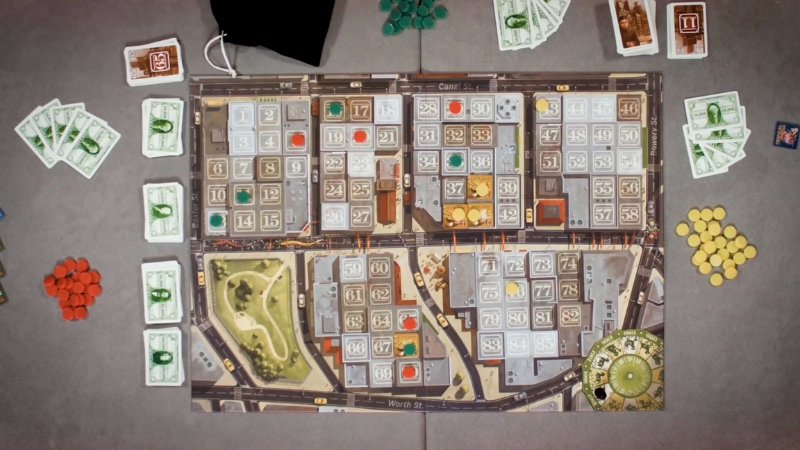
Attribute
Details
Example Game
Chinatown
Ideal Players
3–5
Play Time
60–90 minutes
Focus
Deal-making, persuasion, trading
Why it stands out: These games rely on human interaction more than mechanics. Bluffing, trading, alliances — your words are your weapons.
What Chinatown feels like: You’re a business owner trying to build up properties. Every round, you trade real estate, signage, money, and promises.
The game rewards talkers, diplomats, and those willing to make (and break) deals. It’s social and highly replayable.
35. Logic Deduction Grid Games
@tiktokboardgames If you are scared of BigFoot, just remember… there is BiggerFeet. #boardgames #gamenight #cryptid ♬ original sound – TiktokBoardgames
Attribute
Details
Example Game
Cryptid
Ideal Players
3–5
Play Time
30–50 minutes
Focus
Pure logic puzzles, grid deduction, and clues
Why people love them: These games scratch the same itch as Sudoku or logic puzzles. Each player has a piece of hidden information, and by listening to clues and watching responses, you eliminate possibilities on a shared map. No bluffing, no dice — just deduction through clean logic.
What Cryptid feels like: You’re cryptozoologists trying to locate a mythical creature on a hex grid. Each player has a private rule, like “It’s within 2 spaces of a forest.”
The goal is to deduce the one space on the map that satisfies all rules combined, without ever seeing the others’ clues. It feels like a competitive crossword — and when someone suddenly makes a perfect guess, it’s magic.
36. Flip-and-Fill Games
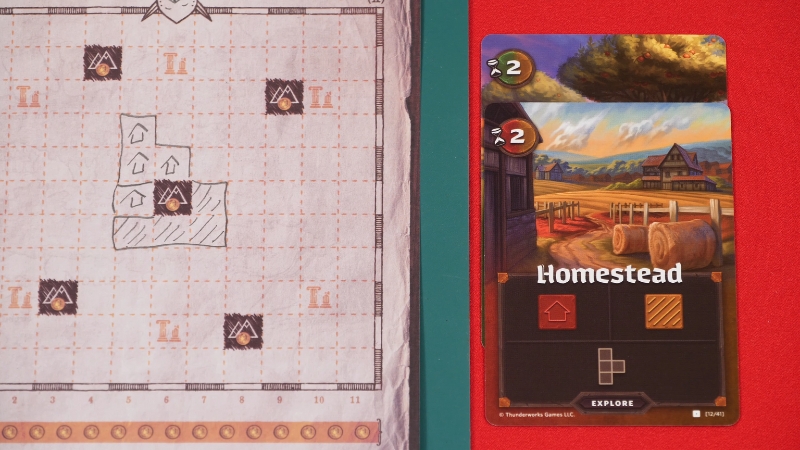
Attribute
Details
Example Game
Cartographers
Ideal Players
1–100 (like roll-and-writes)
Play Time
30–40 minutes
Focus
Drawing maps, Tetris-style shapes, patterns
Why people love them: Unlike dice-based roll-and-writes, flip-and-fills use card decks to reveal shapes or actions, adding predictability and variety. Everyone draws the same shapes but chooses where to place them — it’s all about optimization and aesthetics.
What Cartographers are like: You’re drawing a fantasy map on a grid, placing forests, rivers, monsters, and more. Each turn, a shape is revealed, and you fit it somewhere smart.
You want to meet certain scoring goals, but also deal with map-invading monsters. It’s creative, relaxing, and weirdly satisfying to look at your paper at the end.
37. Time Track Movement Games
| Attribute | Details |
| Example Game | Tzolk’in: The Mayan Calendar |
| Ideal Players | 2–4 |
| Play Time | 90 minutes |
| Focus | Delayed rewards, planning, and rotating action spaces |
Why people love them: These games flip worker placement on its head. You don’t take your action now — you place a piece to do something better later.
Every round, time advances, and the value of your action increases… if you can wait. Patience becomes strategy.
What Tzolk’in feels like: The board has literal gears that rotate each round. You place workers on a gear, and they move forward as time passes.
Wait long enough, and they reach powerful actions. But wait too long, and someone else might ruin your plan. It’s like playing chess on a rotating calendar.
38. Nonlinear Objective Games

Attribute
Details
Example Game
Ark Nova
Ideal Players
1–4
Play Time
90–150 minutes
Focus
Multiple paths to victory, efficiency, and synergy
Why people love them: These are sandbox-style eurogames where there’s no “one right way” to win. You might build animals, raise conservation, manage income, or manipulate timing — all are valid, depending on how you build your strategy. Every game feels different.
What Ark Nova feels like: You run a modern zoo, but it’s more than just animals — you build enclosures, support projects, hire staff, and balance appeal vs. conservation. The puzzle comes from managing five action cards that shift each turn.
39. Polyomino Placement Games
Attribute
Details
Example Game
Barenpark
Ideal Players
2–4
Play Time
30–45 minutes
Focus
Spatial strategy, tile efficiency
Why people love them: These games use puzzle-shaped tiles — like Tetris pieces — and challenge you to fill space efficiently. They’re great for visual thinkers and feel both calming and competitive.
What Barenpark feels like: You build a bear park by laying oddly-shaped tiles onto a grid. Each piece placed gives you new tiles or bonuses.
The faster you complete sections, the better your score. It’s lightweight, tactile, and full of “ooh, that fits perfectly” moments.
40. AI-Powered Solo Games
| Attribute | Details |
| Example Game | One Deck Dungeon (App-Assisted) |
| Ideal Players | 1 |
| Play Time | 30–45 minutes |
| Focus | App-based automation, solo narrative |
Why people love them: These solo games use apps or AI systems to handle enemies, events, or story logic. They feel like portable video games — except you’re still rolling the dice or placing the cards yourself. Perfect for solo players who want cha challenge without upkeep.
What One Deck Dungeon feels like: You pick a hero and descend into a dungeon by flipping cards and rolling dice to beat monsters and traps. The app manages campaign progression, enemies, and timing. It’s fast, brutal, and surprisingly deep for a one-person card-and-dice setup.
41. Reverse Puzzle Games
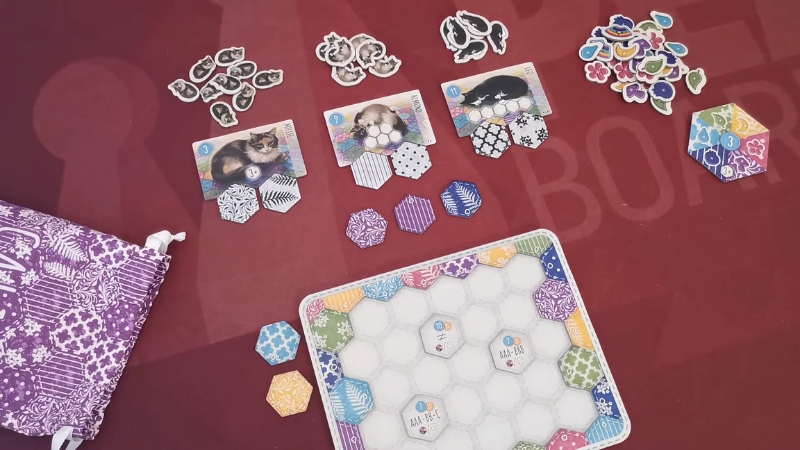
Attribute
Details
Example Game
Calico
Ideal Players
1–4
Play Time
30–45 minutes
Focus
Overlapping goals, tight decisions, spatial tension
Why people love them: These games challenge you to solve multiple goals simultaneously, often in ways that conflict. It’s not about solving one puzzle — it’s about balancing five. Great for people who enjoy constraint-based creativity.
What Calico feels like: You’re sewing a quilt with tiles that represent patterns and colors. You want to match colors for cats, patterns for buttons, and meet design goals — all at once. It’s impossibly tight and incredibly rewarding when you pull it off.
42. Non-Euclidean Board Games
@calliopegames How to play Tsuro! #boardgames #howtoplay #EatFreshRefresh #sheincares ♬ Steven Universe – L.Dre
Attribute
Details
Example Game
Tsuro
Ideal Players
2–8
Play Time
15–20 minutes
Focus
Abstract path building, spatial manipulation
Why people love them: These games play with space in clever or unusual ways — curved paths, looping patterns, or movement rules that feel different from standard grids. They’re typically relaxing, light, and visually elegant.
What Tsuro feels like: Each player places tiles that extend their path, and everyone’s paths intersect. If your line runs off the board or hits another player, you’re out. It’s peaceful but sneaky — and the whole game is over in under 20 minutes.
43. No-Turn Games
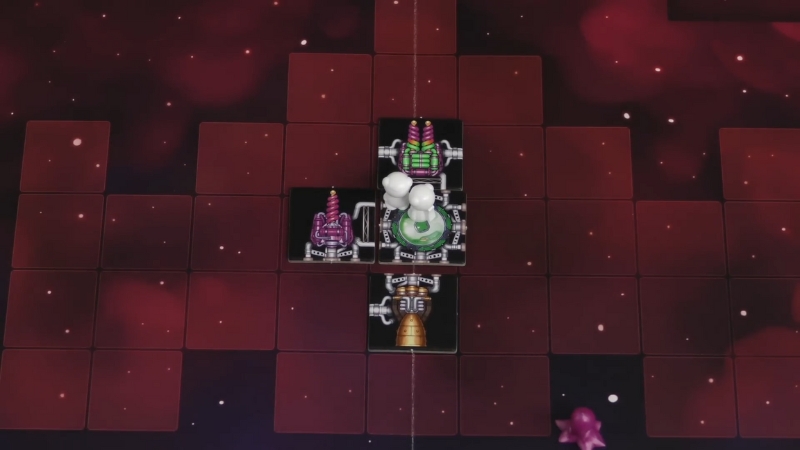
Attribute
Details
Example Game
Galaxy Trucker
Ideal Players
2–4
Play Time
30–60 minutes
Focus
Simultaneous play, chaos, and planning under pressure
Why people love them: Nobody waits around. These games are played in real time or with simultaneous decisions, so there’s zero downtime. Great for impatient players or high-energy game nights.
What Galaxy Trucker is like: You frantically grab ship parts in real time to build a spaceship, then hope it survives meteors, pirates, and malfunctioning components. It’s chaos, laughter, and disaster, all in one box.
44. Hidden Identity Map Games
Attribute
Details
Example Game
Saboteur
Ideal Players
3–10
Play Time
30 minutes
Focus
Hidden roles, shared map-building, sabotage
Why people love them: A rare genre that combines hidden traitor mechanics with physical board construction. It creates delicious tension as players help build something while secretly trying to ruin it.
What Saboteur feels like: You’re dwarf miners digging tunnels toward gold — but some of you are secretly trying to lead everyone the wrong way. You lay path cards, block others, or fix broken tools. It’s sneaky, simple, and perfect for groups who love backstabbing.
45. Microgames
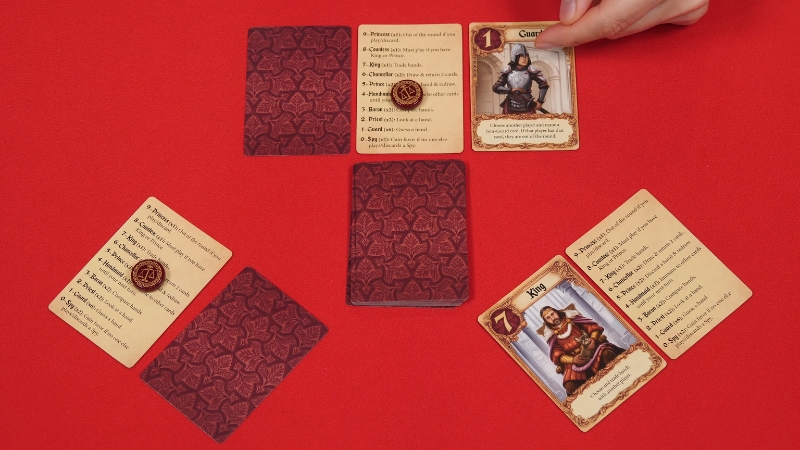
Attribute
Details
Example Game
Love Letter
Ideal Players
2–4 (can scale higher)
Play Time
10–15 minutes
Focus
Minimal components, maximum strategy
Why people love them: Microgames deliver surprising depth in an ultra-compact package — often just 10–20 cards. They’re cheap, fast, portable, and often full of clever twists. Ideal for travel or short play windows.
What Love Letter feels like: You draw and play one card per turn, trying to eliminate other players or hold the highest value card at the end. Despite its simplicity, you’ll bluff, deduce, and scheme — all in under 15 minutes.
46. Movement Prediction Games
| Attribute | Details |
| Example Game | Ricochet Robots |
| Ideal Players | 1–6 |
| Play Time | 30–45 minutes |
| Focus | Route planning, spatial logic, speed |
Why people love them: These games challenge players to think several moves ahead, predicting movement paths before acting. They’re perfect for logic lovers and often become quiet battles of “who can see the shortest path first?”
What Ricochet Robots are like: You try to move a robot to a target square using the fewest moves. But robots can’t stop unless they hit a wall or another robot, so it’s all about bouncing perfectly. It’s competitive thinking in silence — and deeply addictive.
47. Perspective-Based Games
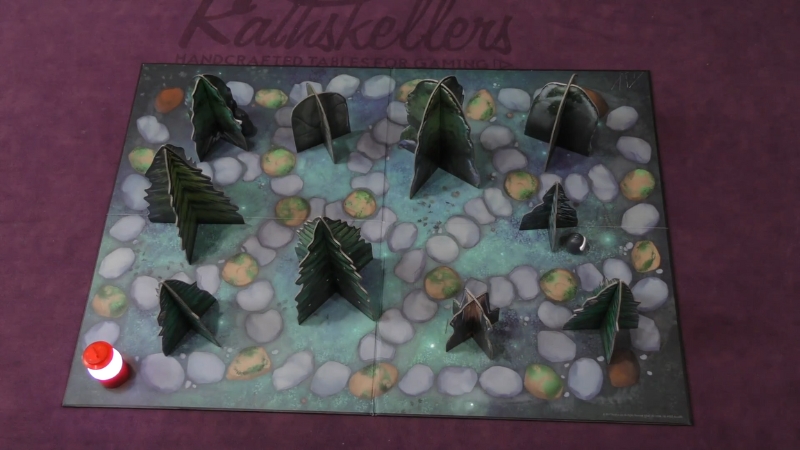
Attribute
Details
Example Game
Shadows in the Forest (a.k.a. Waldschattenspiel)
Ideal Players
2–6
Play Time
20–30 minutes
Focus
Light vs. shadow mechanics, unique visibility rules
Why people love them: These games use real lighting, physical space, or table position to create gameplay. They turn the environment itself into part of the game, often creating eerie, beautiful, or unforgettable experiences.
What Shadows in the Forest feels like: Played in the dark, one player controls a lantern that physically casts light on a 3D board. The others move small figures hiding in the shadows. If they’re caught in the light, they freeze. It feels like a tag meets stealth game — atmospheric and totally unlike anything else.
Related Posts:
- What Are the Types of Polynomials? Definitions and Examples
- Top 15 Math Board Games That Make Learning Fun
- 10 Board Games That Teach Math Without Kids Realizing
- Top 40 Cooperative Board Games You’ll Love Playing Together
- Arithmetic vs. Geometric Sequences - Key Differences…
- Whole Numbers Explained - Definition, Uses, and Key…



